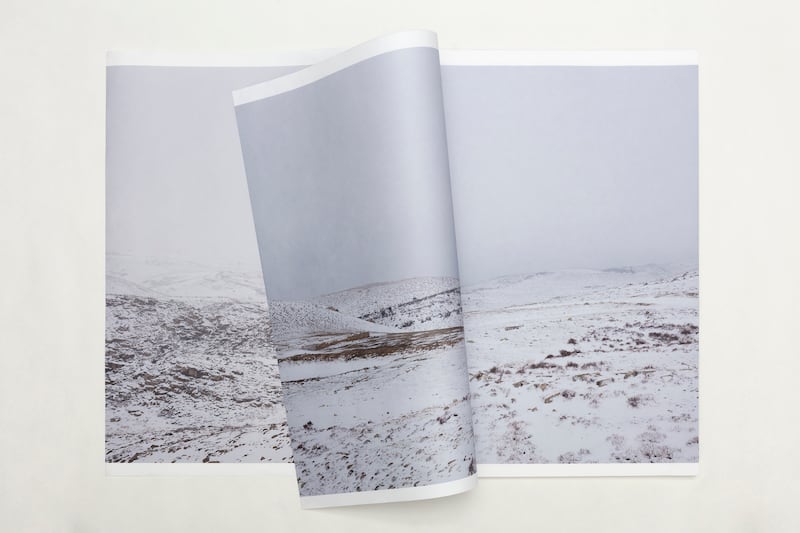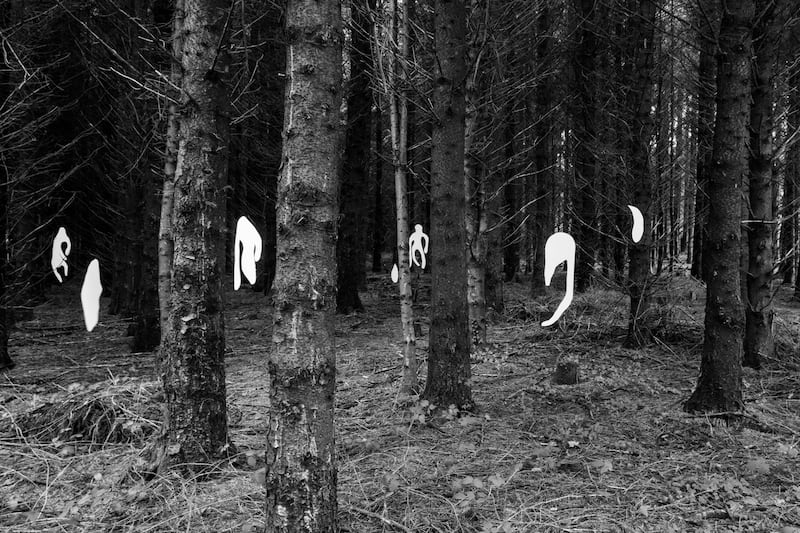DAVID QUINN: JOYFUL MYSTERIES
★★★★
Kevin Kavanagh Gallery, Chancery Lane, Dublin until July 27th; kevinkavanagh.ie
There’s a retrospective, religious ring to the title of David Quinn’s exhibition, Joyful Mysteries and, while it does not specifically endorse the idea, the work doesn’t disavow it. Often, in the past, Quinn’s paintings have expressed something like a state of wonder verging on the transcendent. But it was and is the wonder of the everyday, moments of ordinary being that are suffused with a kind of blissful radiance. If it wasn’t for its current, diluted ubiquity, one might mention the term mindfulness.
Quinn’s everyday has a context, and it is rural and postoral rather than urban. He grew up in Sligo, attended NCAD in Dublin, and settled in rural Co Mayo. The Mayo setting in his paintings is usually aglow with benign light. That may not be the norm in reality, in the sense of an average day in the northwest of Ireland, but it is all the same accurate for a significant percentage of the time, and all the more amazing for its relative scarcity.
While absolutely reliable with colour – harmonious yellows, greens and blues especially, enlivened with a slight astringency – Quinn would not be described as a colourist in the conventional sense. Still, he has taken a dramatic step in this recent work, which is monochrome in appearance and presumably in fact. It is also tonally rich in a way that recalls the golden age of analogue black-and-white photographic printing, with a deep, silvery burnish. And, one other thing, he takes the pointillism of Georges Seurat, generally underrated as an art-historical curiosity, and re-works it for the post-Ben-Day dot era.

Quinn’s mixed media compositions in Joyful Mysteries largely comprise what isn’t there: rhythmic patterns of dots – dots of light – that articulate the images. The images can be general or specific, and more often a combination of the two. For example, Pines consists of an outstretched arm and hand against a background of pine needles. Boy is a head-and-shoulders view of a boy from the back against a similarly patterned, natural setting. It is also, somehow, quite magical and iconic. In Dunes, the dancing grasses provide the entire content. Singular motifs reappear in Moon, Mountain, Tower and other pieces.
The tone of Quinn’s work can recall Terrence Malick’s films, with their yearning for and sometimes cloying evocation of transcendence. It’s a precarious path to trace. Yet, to be fair, Quinn’s work emerges pretty well on balance, and Joyful Mysteries is a benchmark, a fine show featuring many excellent individual pieces.
THE MOUNTAIN AND OTHER EXHIBITIONS
★★★★
Nadim Asfar plus. The Museum of Contemporary Photography of Ireland, Dublin Castle, Dublin until July 28th (Adm €5); photoireland.org
For the month of July, as part of PhotoIreland 2019, the conference centre at Dublin Castle is a pop-up Museum of Contemporary Photography, and a pretty convincing one, too. The content is certainly there, and the available spaces have been cleverly harnessed with minimal intervention. Practically everything on view is likely to prompt thought rather than confirm your preconceptions about photography.
None more so than the main solo show, an installment of Franco-Lebanese photographer Nadim Asfar’s The Mountain curated by Hester Keijser. Laid out on tables and unfolding like a picture story scroll, Asfar’s mountainous landscapes are accompanied by pieces of his own and quoted texts. Negotiating the work is in ways like walking the land. You get a sense of spaciousness, continuity, atmosphere. The images, which chart the terrain through the seasons, are beautiful, but Asfar notes that beauty was not his aim, it’s just there.

He has been working on the project since 2014, and several exhibitions have resulted, each different. This one centres on the mountain cluster of Mount Hermon. Geologically of a piece, politically it is fragmented, occupying as it does space in Lebanon, Syria and the Golan Heights.
New Irish Works 2019 marshalls 10 projects by Irish or Irish-based artists. Each project is a small but substantial exhibition in itself. Even the jury that selected the work from open call was substantial. The mix is genuinely diverse and all are worth the investment of attention it really does take to grasp the rationale in each case, from Phelim Hoey’s treatment of the body as machine to Robert Ellis’s reflections on place, memory, language and identity.

Some featured projects strain at the confines of presentation, asking for more space, which may happen in time. Especially intriguing is the work of Dorje de Burgh, whose Dream the End has a rich, novelistic – or filmic? – texture; Jamin Keogh’s A Constant Parameter, which reflects on the horizon; Róisín White’s recounting and critique of the “rest cure” (White also features in Parallel) and Zoe Hamill’s investigation of memory.
The shortlisted work in the sixth Tokyo International Photography Competition, on the theme of Need/Want, is compactly displayed. That includes the worthy winner, Korean Seunggu Kim. Several photographs from his Better Days are included. Koreans work long hours, he explains, and leisure time is brief. There’s pressure to make the most of it. He has explored the leisure venues around Seoul and its suburbs. His finely detailed, densely populated images show people determined to enjoy themselves by swimming pools, in theme parks, and so on. Often, the sites are incongruously surrounded by the infrastructure of the working city. Superb documents, his images are also meditations on broad subjects: work and leisure, urban living, life’s priorities and more. Several other shortlisted projects also make for compelling viewing.
That by no means exhausts the resources of the museum. Parallel Platform, curated by Seda Yildiz, is angled at critically exploring the ubiquity of photographic imagery in contemporary culture. There’s also an extensive display of the 53 shortlisted titles for the Kassel Dummy Award – that is, an award for the best unpublished photobook mock-up of the year, a fascinating exhibition in itself.









